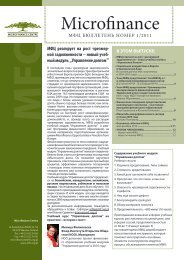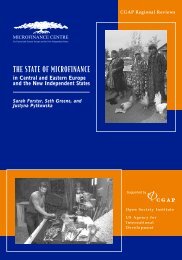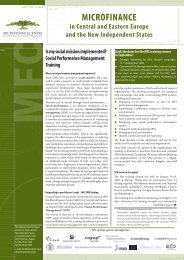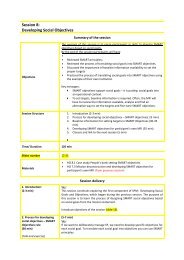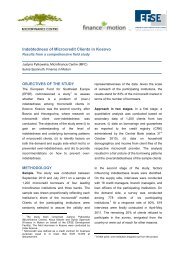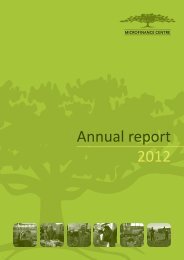Value Chains research report Tajikistan final - Microfinance Centre
Value Chains research report Tajikistan final - Microfinance Centre
Value Chains research report Tajikistan final - Microfinance Centre
You also want an ePaper? Increase the reach of your titles
YUMPU automatically turns print PDFs into web optimized ePapers that Google loves.
Analysis of existing lemon growing and marketing business shows that:<br />
• All sellers are independent from one another;<br />
• Growers’ skills and experience of lemon growing vary;<br />
• Some manufacturers do not have adequate storage facilities;<br />
• Not all manufacturers are ready to risk their crop;<br />
• Small production volumes per household;<br />
• Consolidated production volumes are small;<br />
• High concentration of growers in some districts;<br />
• Manufacturers do not consider production of lemons as the main source of<br />
revenue;<br />
• Price is formed on the basis of supply and demand;<br />
• Due to historical tradition of selling from home, the prices are quoted EXW;<br />
• Professional lemon growers who treat this crop as a key business are almost<br />
inexistent;<br />
• Small batches are unprofitable for the farmers to transport to the market;<br />
• Households have little interest in investing;<br />
• Large number of pests and diseases are brought from neighboring cotton fields;<br />
• Low productivity and profitability result in lack of interest by some greenhouse<br />
owners; to some extent they start re-equipping the greenhouses for growing<br />
cucumbers and tomatoes.<br />
Processing<br />
Currently lemons are not processed in <strong>Tajikistan</strong> with the exception of a small<br />
educational workshop for processing and packaging lemons in Kurgan-tube which was<br />
opened in 2009 “Limonparvaroni Bokhtar”, which now has over 100 members.<br />
Lemon Storage<br />
Generally, lemon sales are conducted from the end of October until the end of<br />
December. Some farmers prefer to store and wait until May because prices increase to<br />
as much as 18 somoni per kg at the "farm gate." Lemons can be stored until July but<br />
their price and weight decrease in the summer.<br />
On farm storage is considered to be viable by farmers as the requirements for storage<br />
are low. Most farmers store their lemons at the end of October in boxes and separate<br />
each lemon with paper and sawdust. The room must have adequate air circulation and<br />
the temperature should not change sharply. Sawdust is purchased from local sawyers<br />
for 200 somoni per car load. Boxes are available in local workshops. Some farmers<br />
prefer to store them in the dried sand. Others do not pick lemons from the tree until<br />
March believing they maintain a better quality and appearance, though they know that it<br />
will reduce the yield of next year. Some lemons cannot sustain cold. Middle and large<br />
size lemons with light-green or yellow peels which are collected in the beginning of<br />
October are the most suitable for storing. Temperature and humidity requirements are a<br />
function of appearance and degree of ripeness when entering storage.<br />
76




